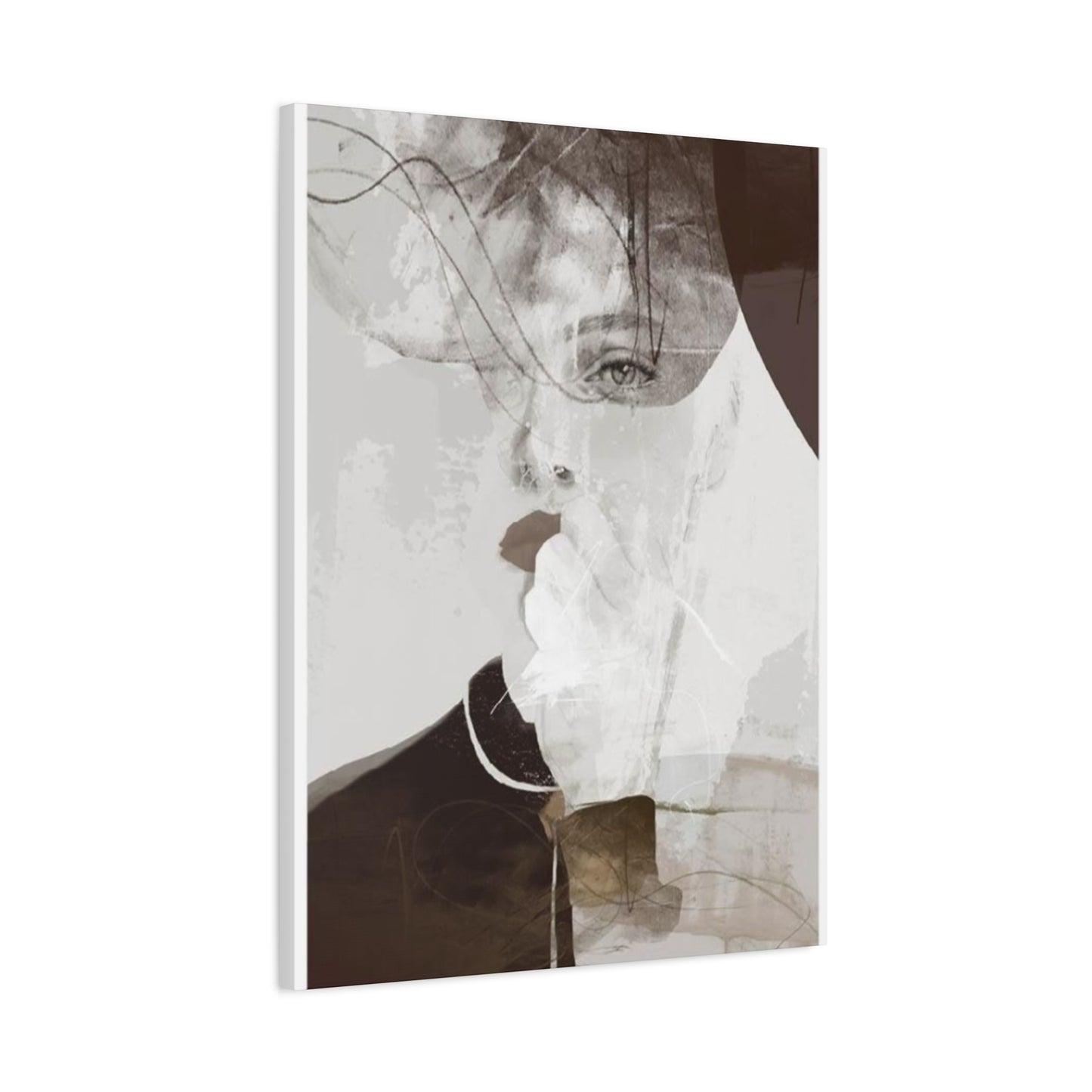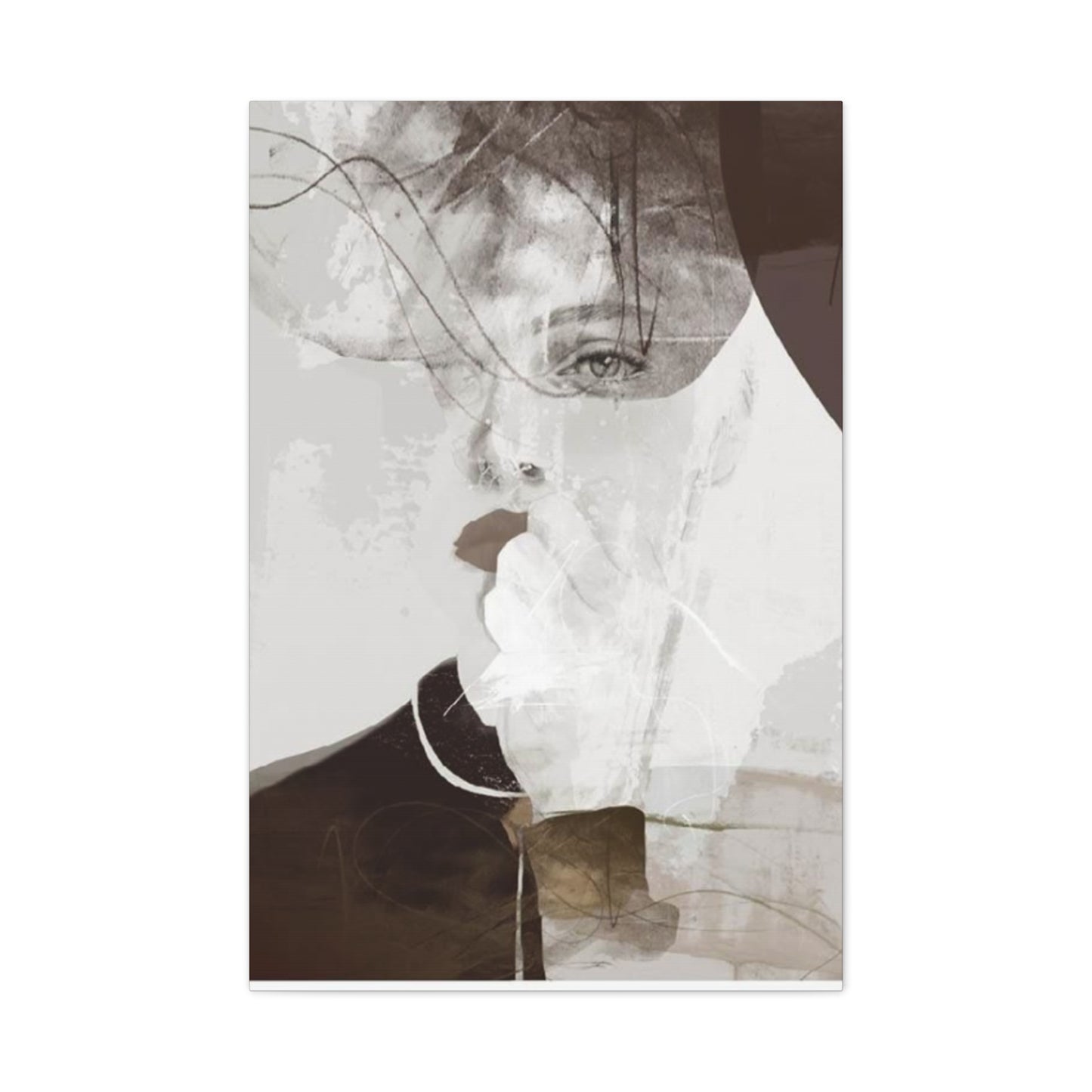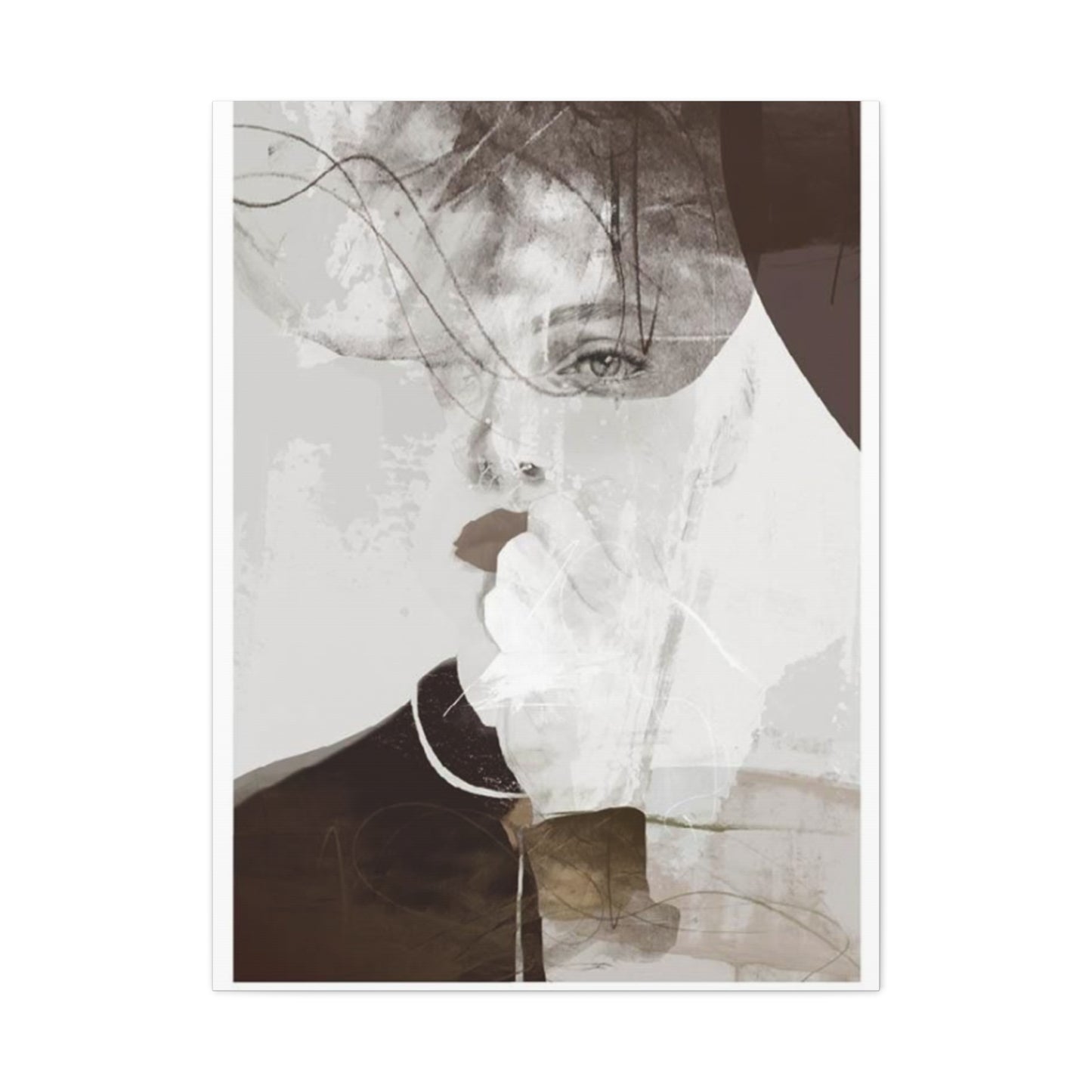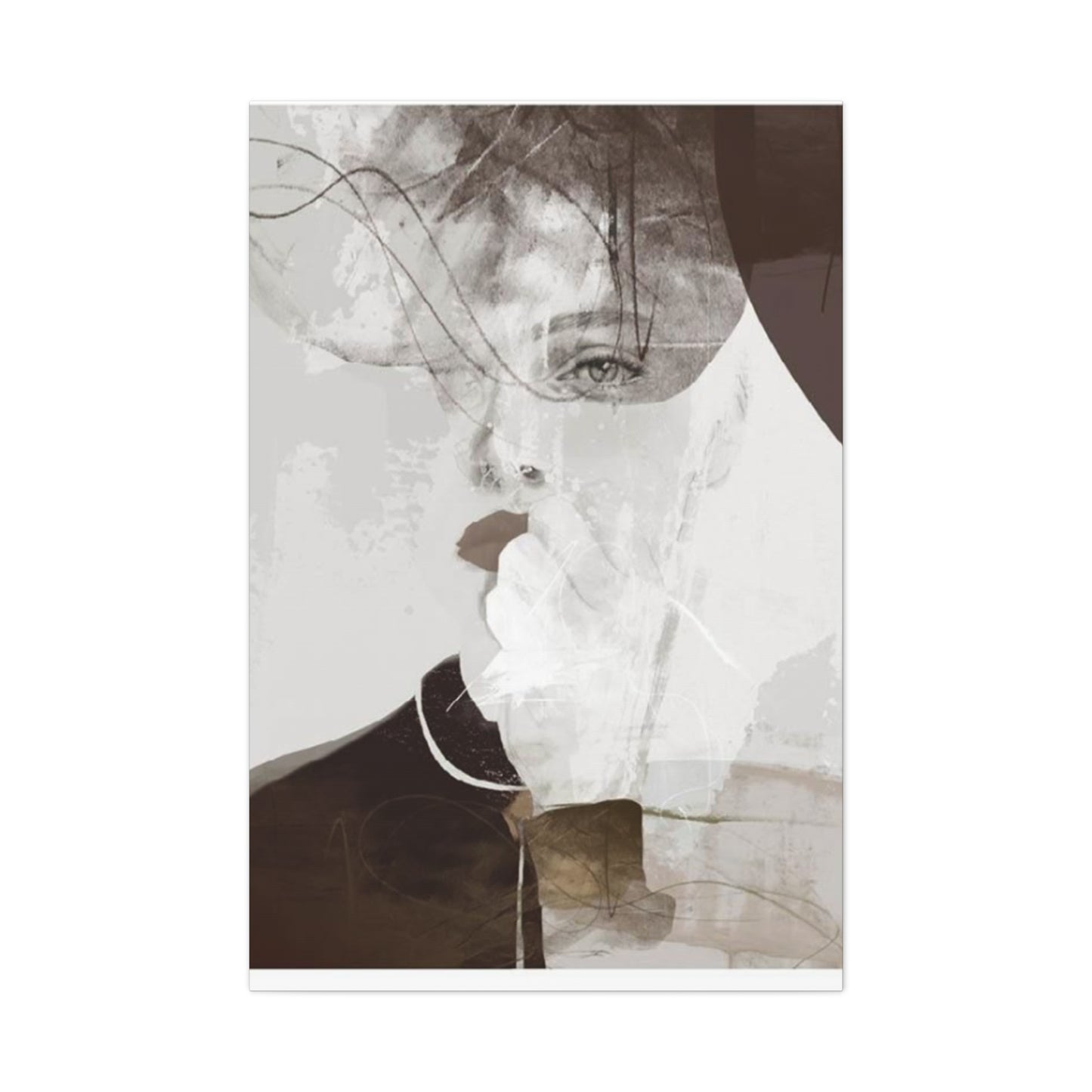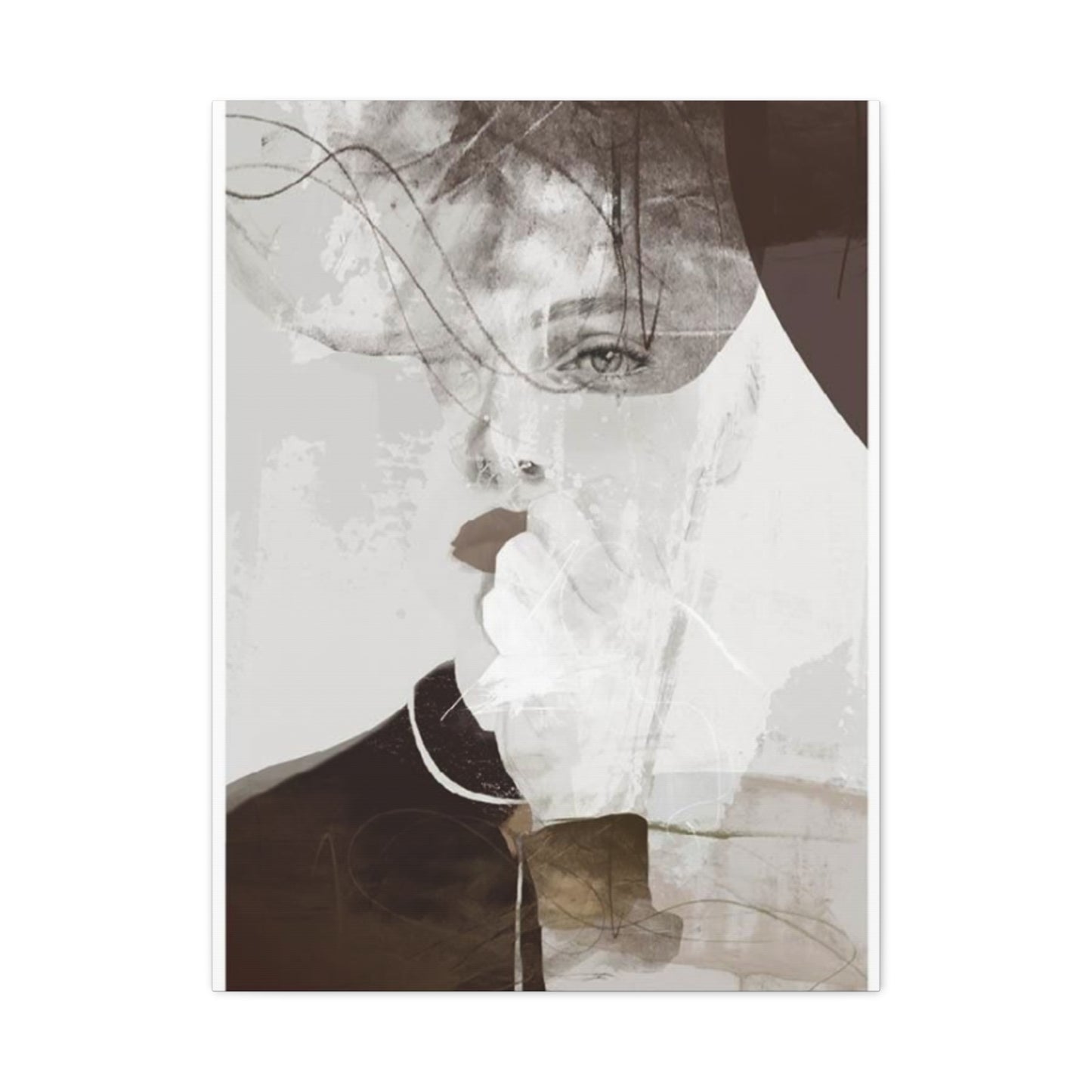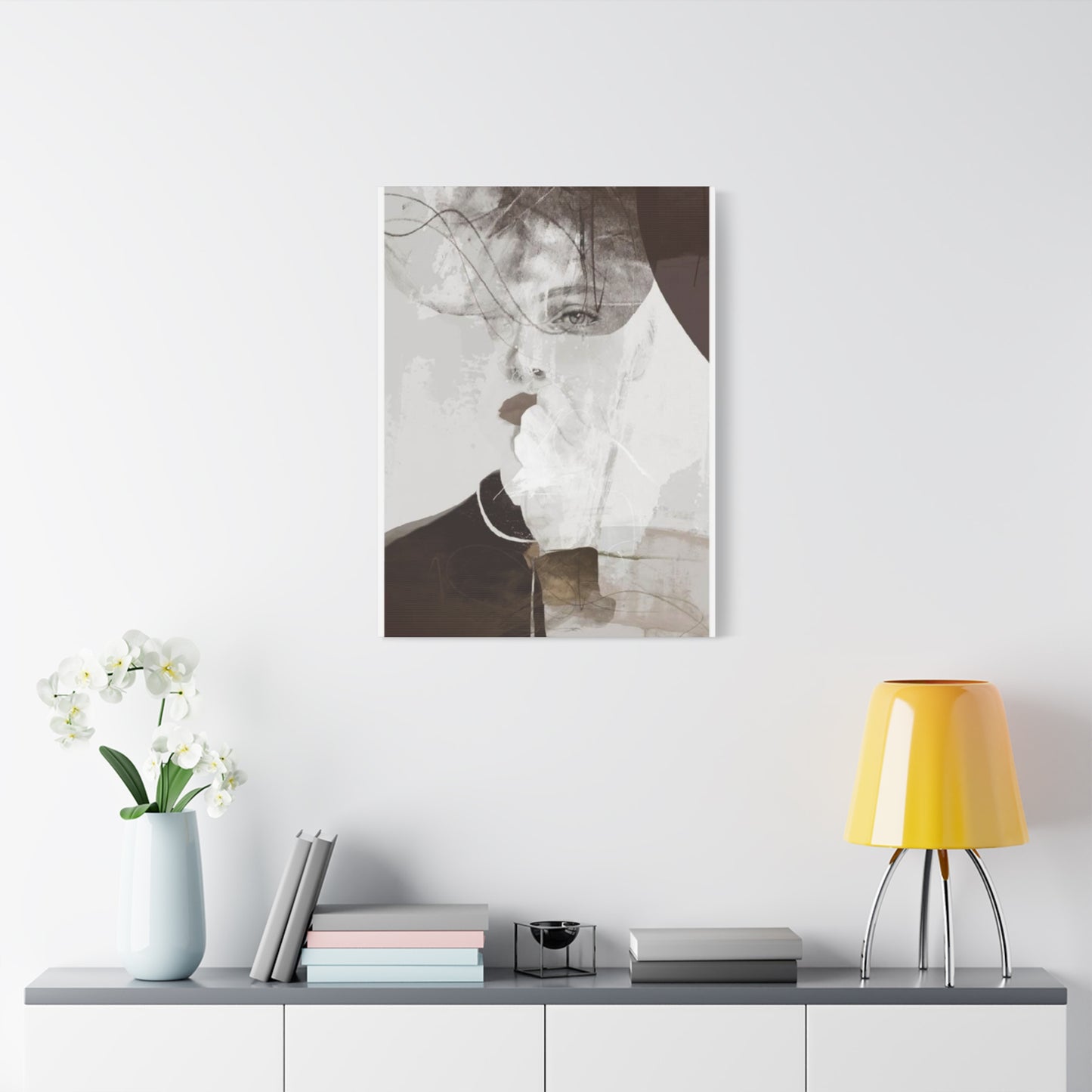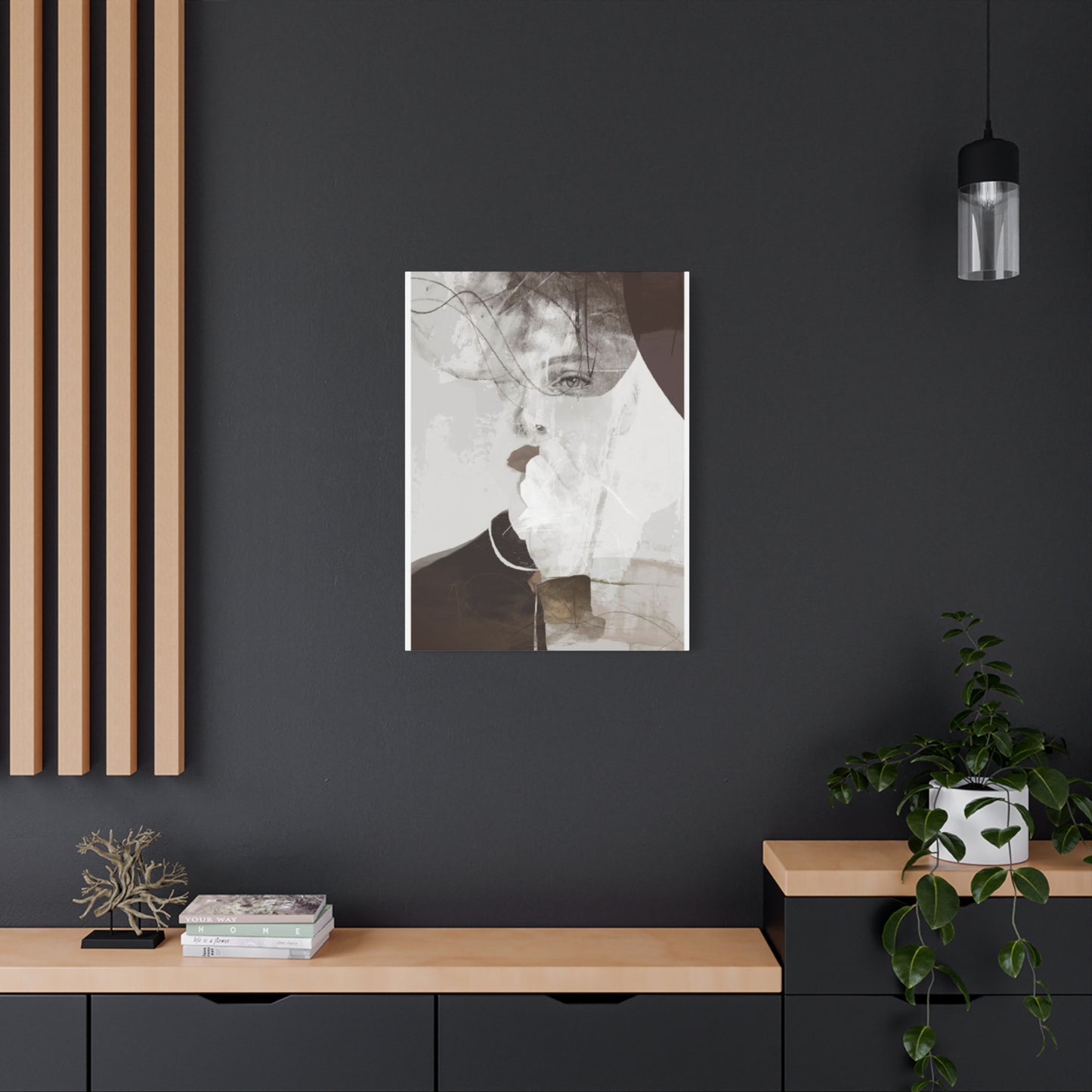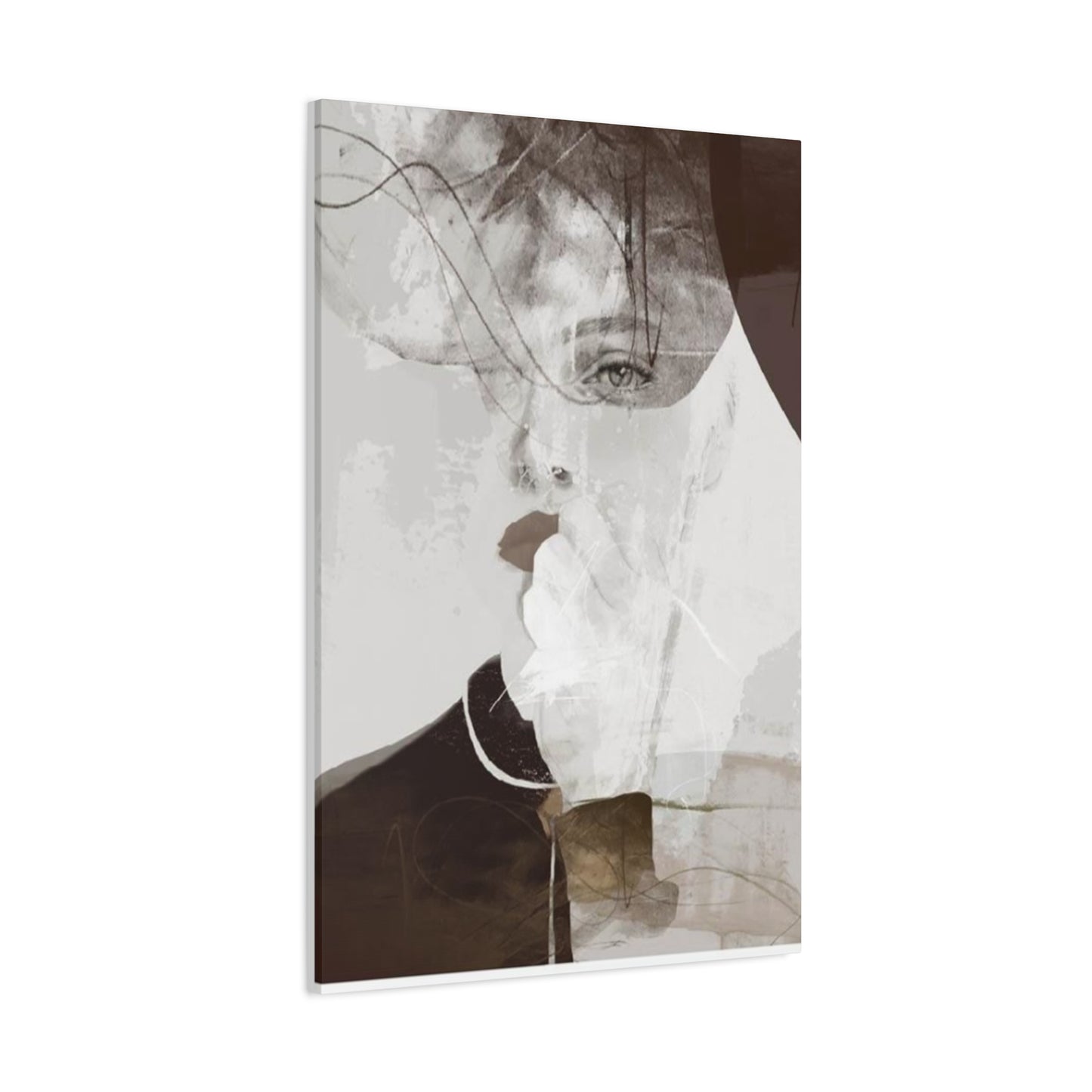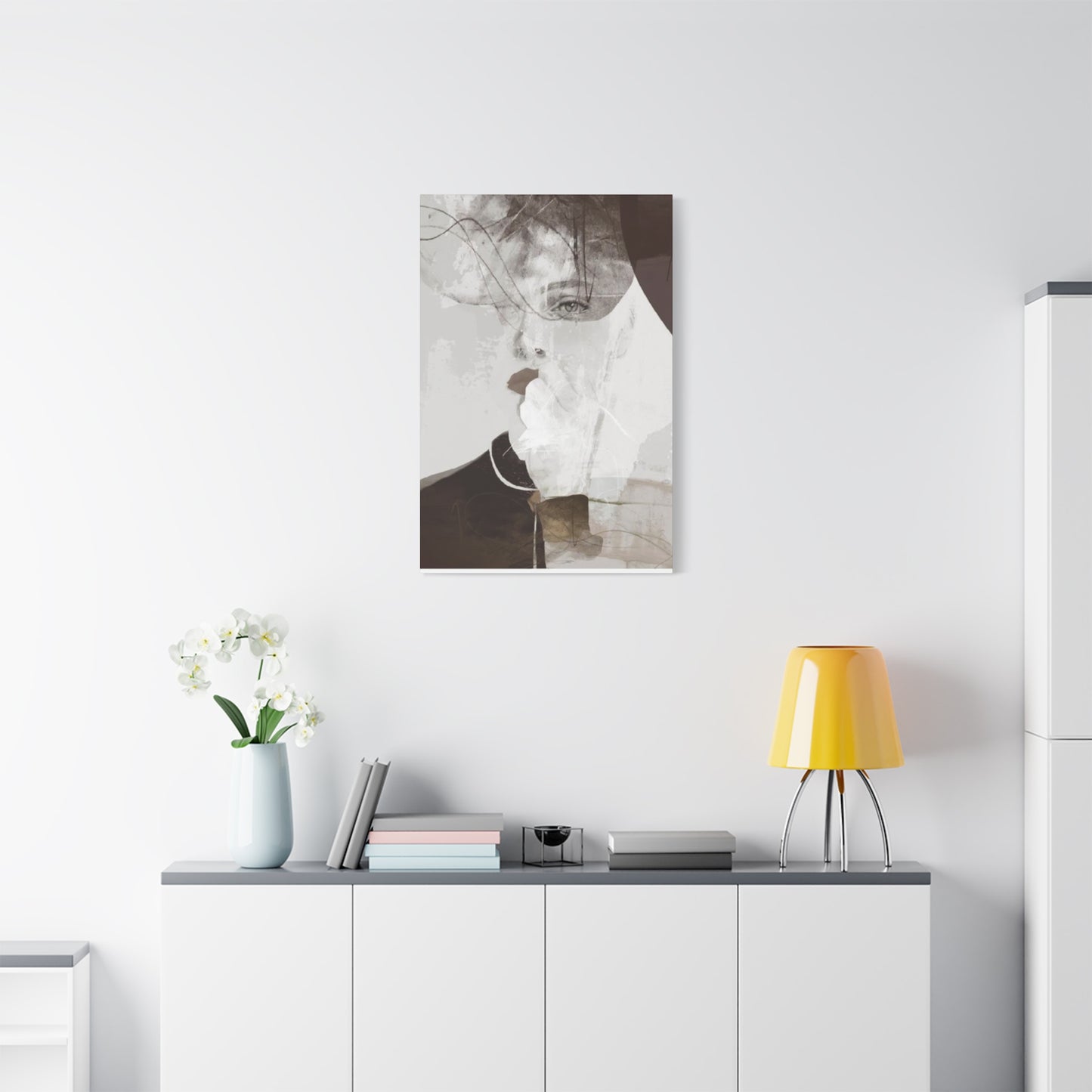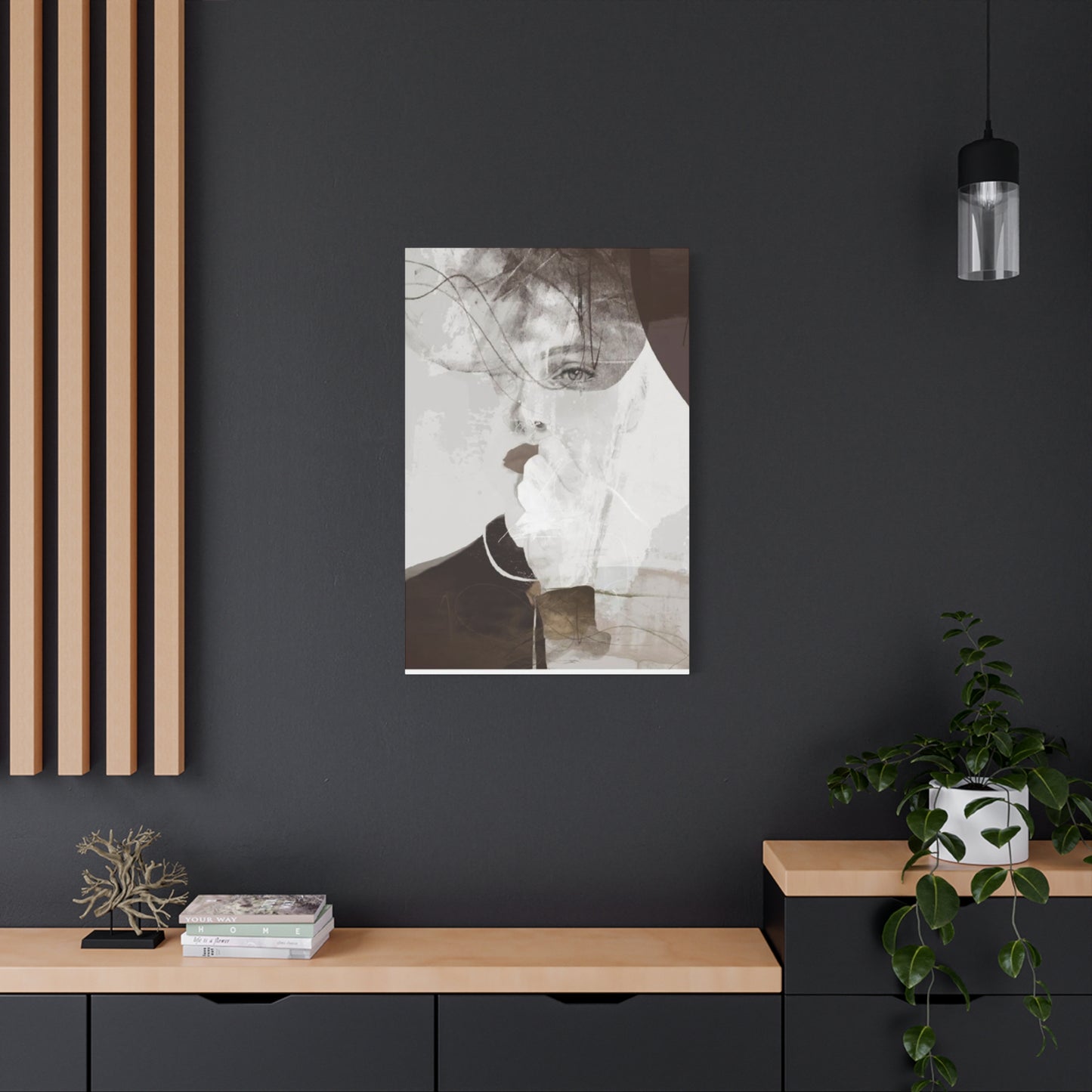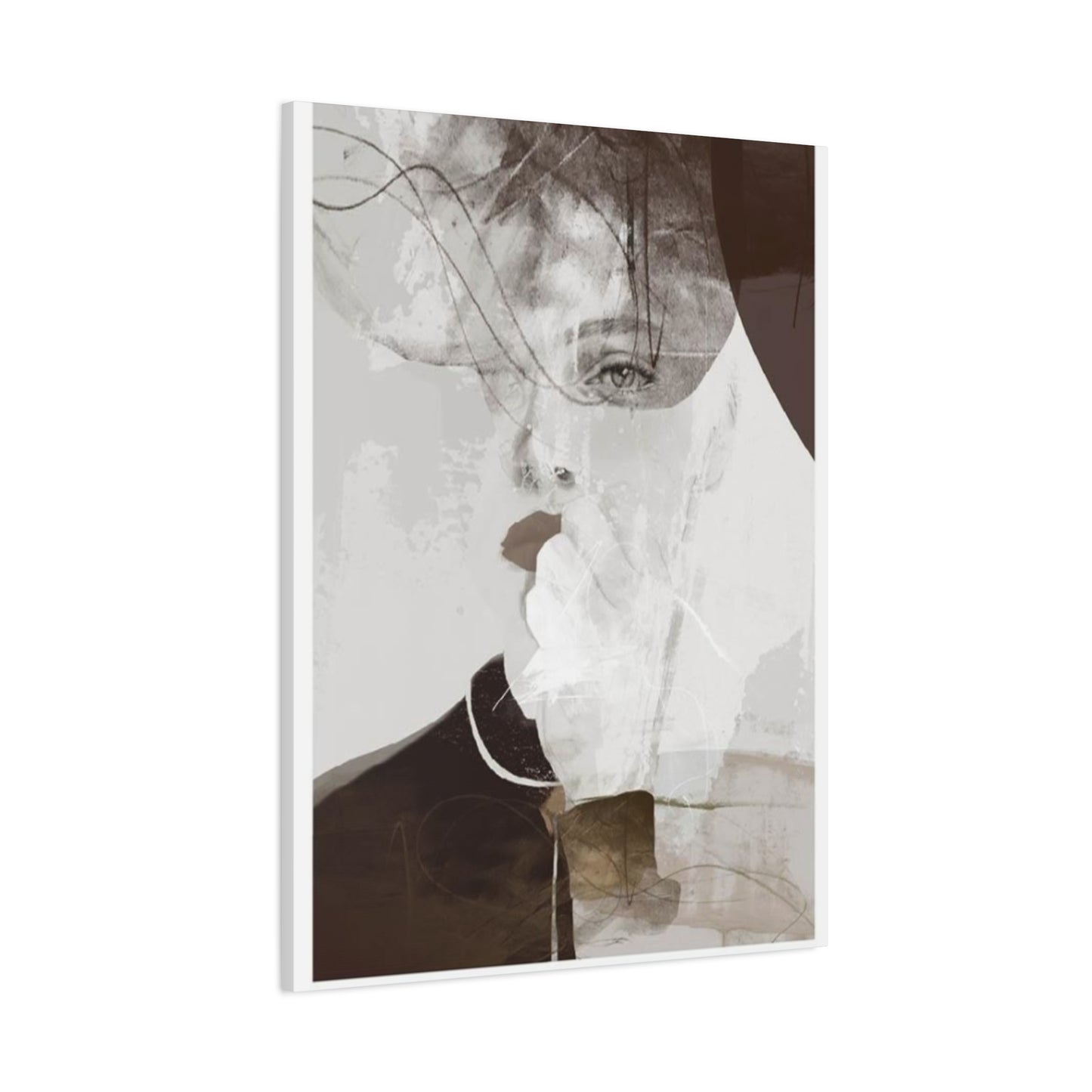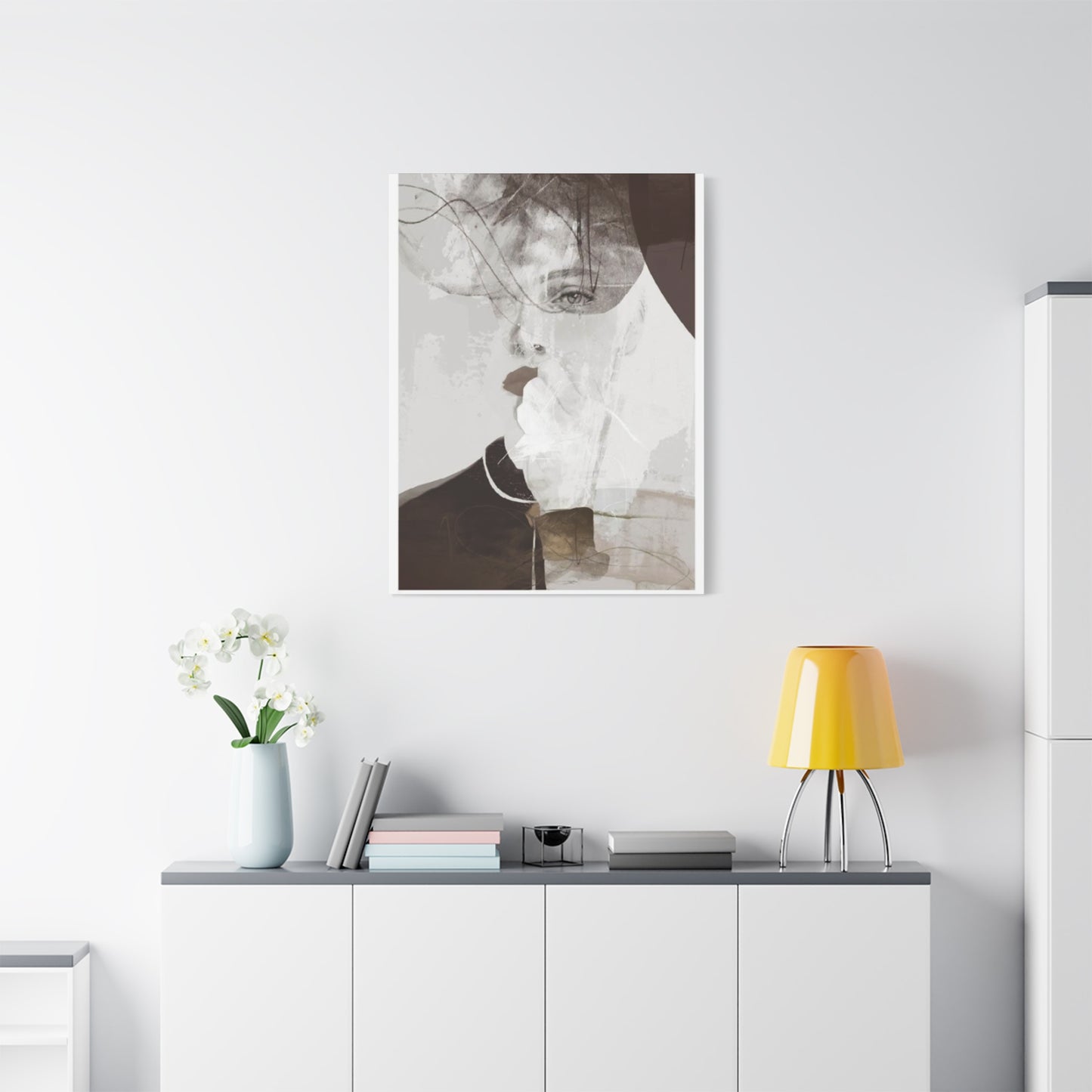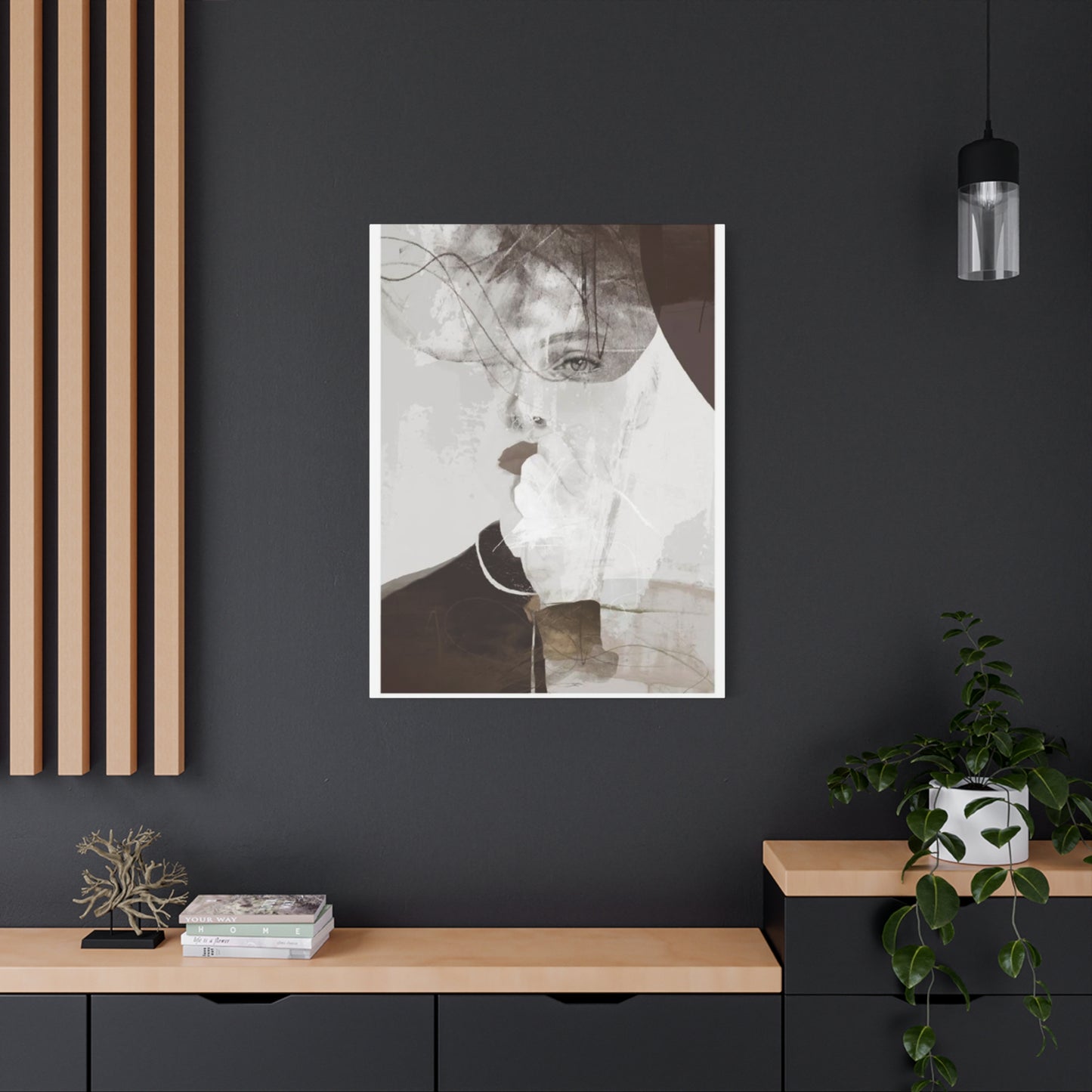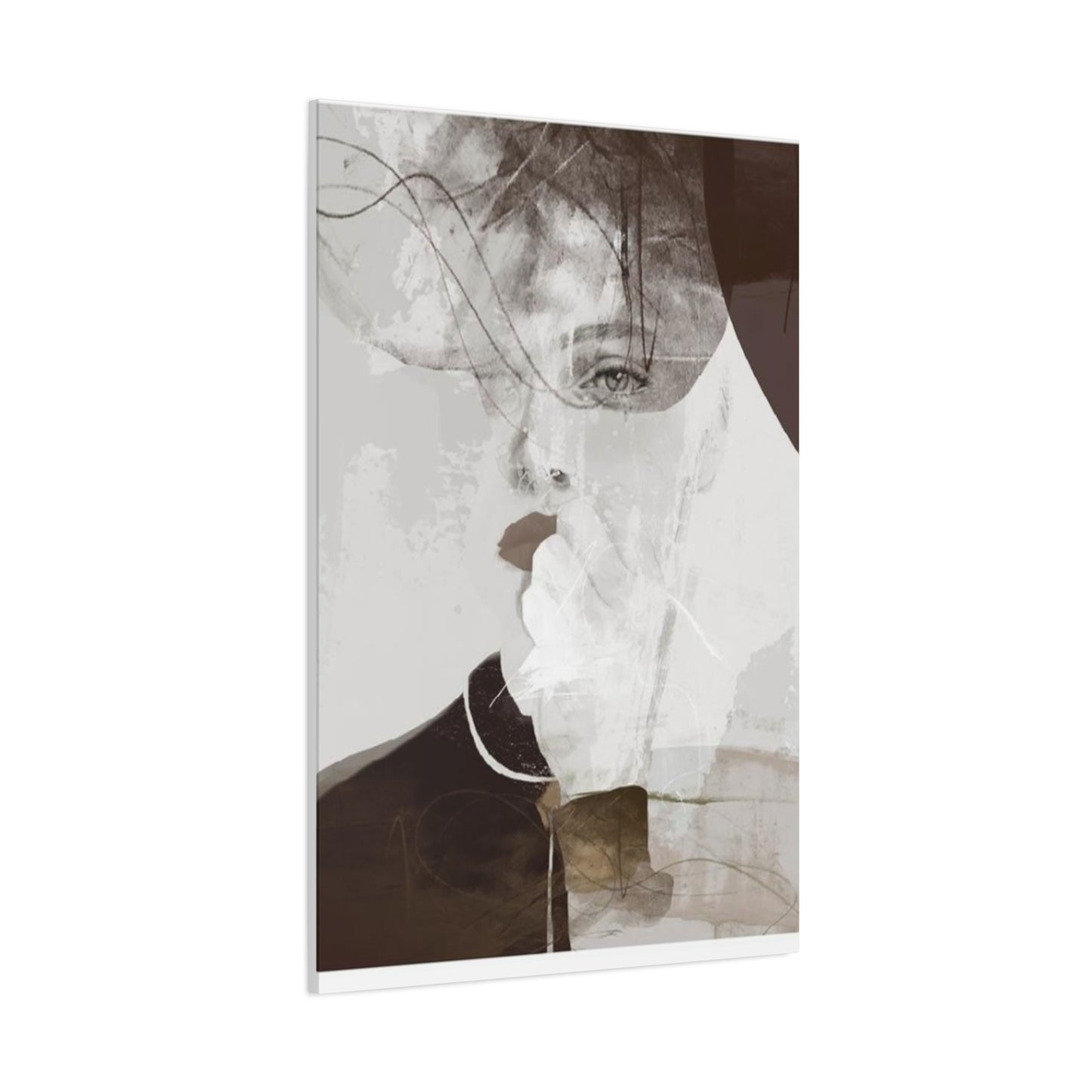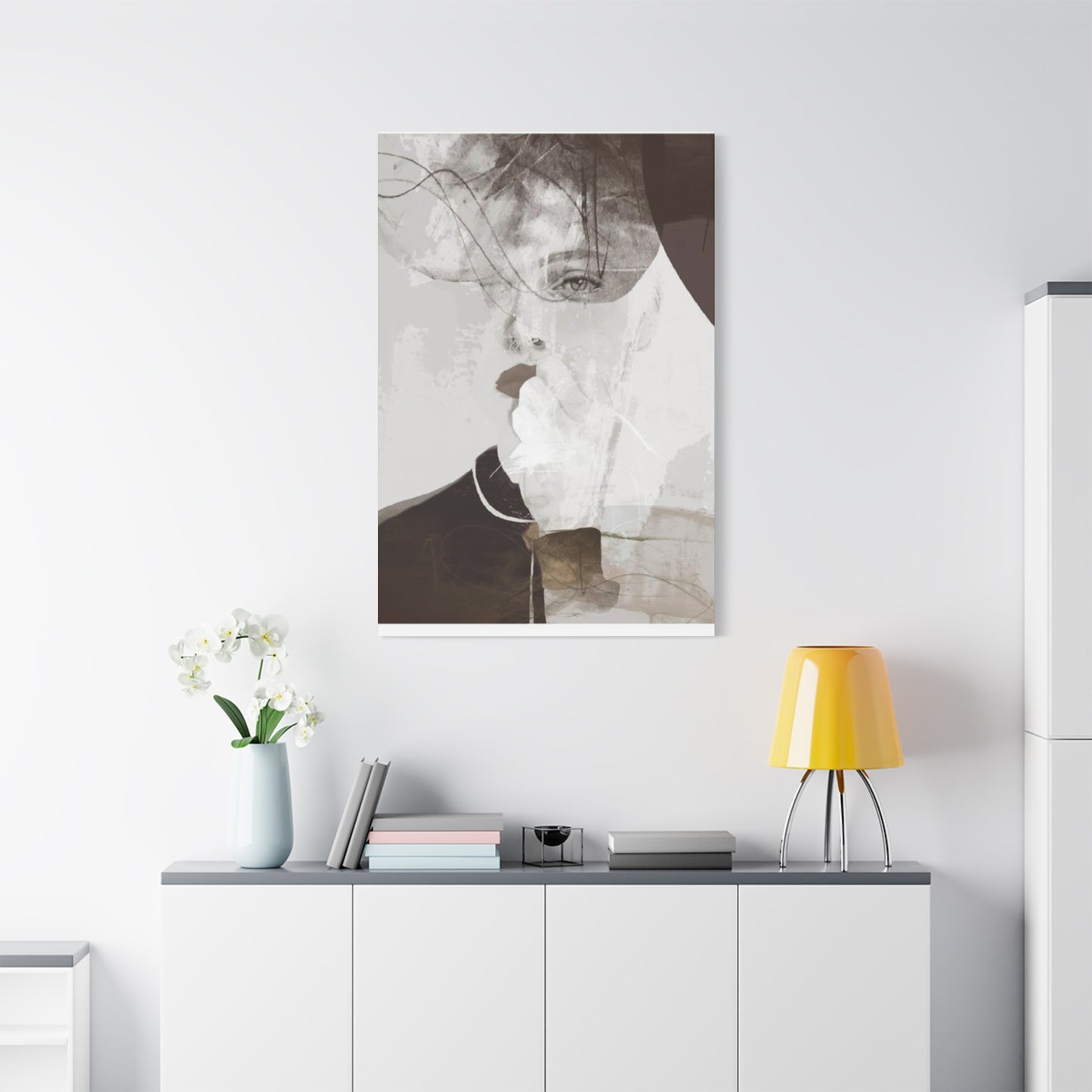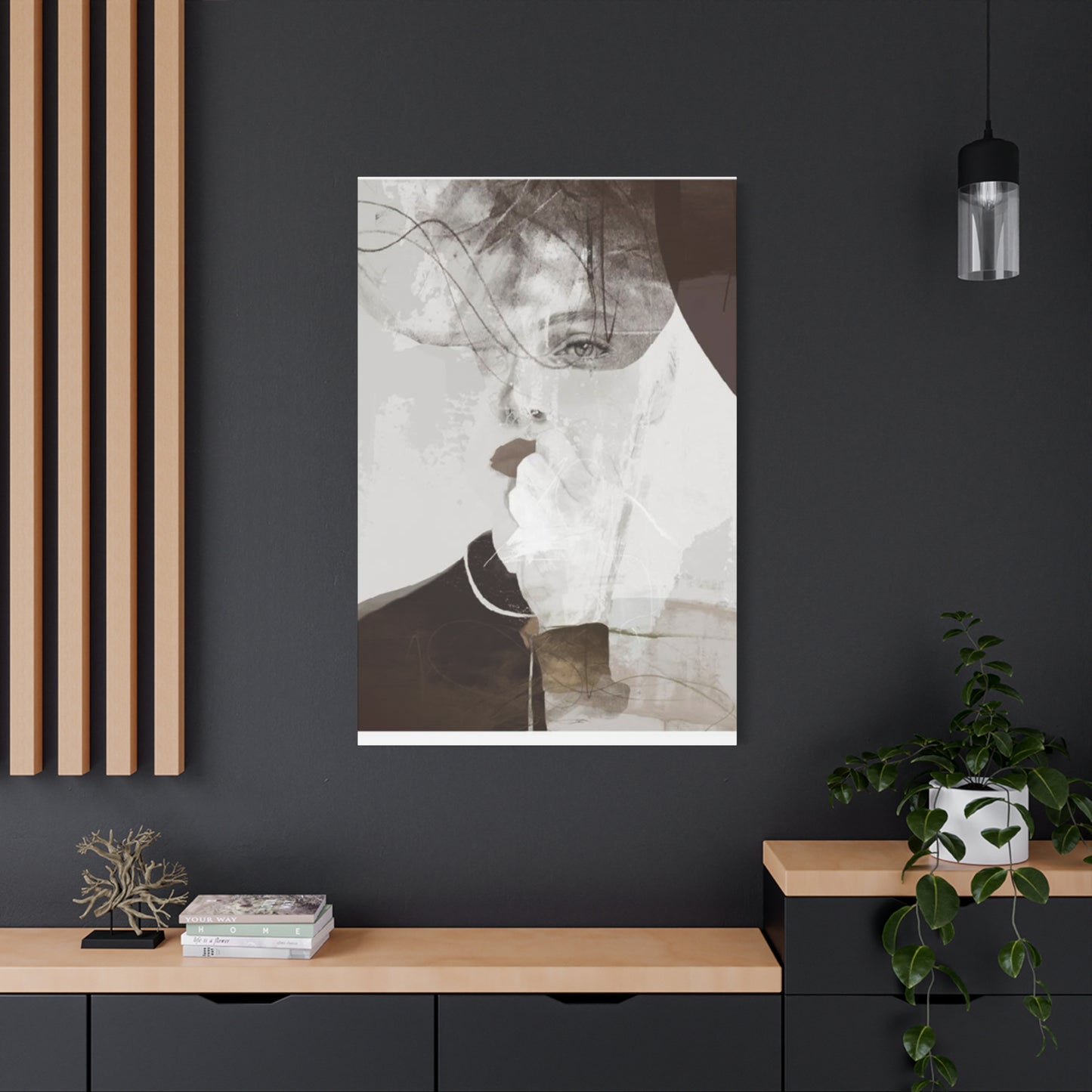Bold Queen Face Wall Art: Modern Canvas Prints That Command Attention
The world of contemporary home decoration has witnessed a remarkable surge in the popularity of royal-themed artwork, particularly pieces featuring regal feminine portraits. These striking visual elements have become increasingly sought after by homeowners, collectors, and decorators who seek to infuse their environments with sophistication, power, and artistic flair. The fusion of classical monarchy motifs with modern artistic techniques has created a unique niche in the art world, offering countless possibilities for personal expression and environmental enhancement.
Royal feminine portraiture represents more than mere decoration; it embodies strength, elegance, and timeless beauty. These artistic pieces serve as powerful focal points that can dramatically alter the atmosphere of any room, whether residential or commercial. The contemporary interpretation of monarchical themes through various artistic mediums has opened up new avenues for creative expression, allowing artists to explore traditional concepts through modern lenses.
The appeal of queen-themed artwork extends beyond simple aesthetic appreciation. These pieces often carry deeper symbolic meanings, representing empowerment, leadership, and grace. In today's society, where individuals increasingly seek to surround themselves with meaningful art that reflects their values and aspirations, royal feminine portraits offer an perfect blend of historical significance and contemporary relevance.
Canvas Print Concepts Featuring Royal Feminine Portraits
Contemporary artists have embraced the challenge of reimagining classical royal portraiture through modern artistic techniques and styles. These canvas creations represent a departure from traditional formal portraits, incorporating elements of abstraction, bold color palettes, and innovative compositional approaches that speak to modern audiences while honoring historical traditions.
The evolution of royal portrait art has been remarkable, transitioning from formal, stately representations to dynamic, expressive interpretations that capture not just physical likeness but emotional depth and character. Modern artists employ various techniques to achieve this transformation, utilizing everything from digital manipulation to mixed media approaches that create layered, complex visual narratives.
One of the most striking aspects of contemporary royal feminine portraiture is the way artists play with scale and proportion. Oversized canvases featuring close-up portraits create dramatic impact, while smaller, more intimate pieces offer subtle elegance. The choice of scale often depends on the intended environment and the emotional response the artist wishes to evoke from viewers.
Color theory plays a crucial role in modern royal portraiture, with artists often departing from traditional color schemes associated with monarchy. Instead of relying solely on purples, golds, and deep blues traditionally associated with royalty, contemporary artists experiment with unexpected color combinations that create visual tension and interest while maintaining the regal essence of the subject matter.
The incorporation of modern artistic movements into royal portraiture has created fascinating hybrid styles. Elements of pop art, abstract expressionism, and even street art techniques find their way into these contemporary interpretations, creating pieces that bridge the gap between classical tradition and modern innovation. This fusion appeals to collectors who appreciate both historical significance and contemporary artistic expression.
Creating Visual Impact Through Bold Color Schemes
The strategic use of color in royal feminine portraiture serves multiple purposes, from establishing mood and atmosphere to creating visual hierarchy and drawing attention to specific elements within the composition. Modern artists understand that color choices can dramatically affect how viewers perceive and respond to artwork, making color selection a critical component of successful royal portrait creation.
Bold, saturated colors have become increasingly popular in contemporary royal portraiture, with artists using vibrant hues to create immediate visual impact. These intense color choices often reflect the strength and confidence associated with royal feminine figures, translating abstract concepts of power and authority into concrete visual elements that viewers can immediately appreciate and understand.
Monochromatic color schemes offer another approach to creating striking royal portraits, utilizing various shades and tints of a single color to create depth and visual interest. This technique can be particularly effective in creating sophisticated, elegant pieces that maintain visual cohesion while exploring the full range of possibilities within a limited color palette.
The psychology of color plays an important role in how viewers respond to royal feminine portraiture. Warm colors such as reds, oranges, and yellows often convey energy, passion, and strength, while cooler colors like blues, greens, and purples can suggest calm authority, wisdom, and nobility. Understanding these color associations allows artists to craft pieces that communicate specific emotional messages to their audiences.
Contrast becomes particularly important when working with bold color schemes, as it helps define forms and create visual separation between different elements within the composition. High contrast combinations can create dramatic, attention-grabbing effects, while more subtle contrast relationships can produce sophisticated, nuanced pieces that reward closer examination and contemplation.
The interaction between color and lighting in royal portraiture cannot be overlooked, as these elements work together to create the overall visual experience. Artists must consider how different lighting conditions will affect color perception and adjust their color choices accordingly to ensure their intended effects are achieved regardless of viewing environment.
Abstract Interpretations of Royal Themes
The movement toward abstraction in royal feminine portraiture represents a significant departure from traditional representational approaches, offering artists greater freedom to explore concepts of royalty through non-literal visual languages. Abstract interpretations allow for more personal and subjective responses from viewers, creating opportunities for individual interpretation and emotional connection.
Geometric abstraction has found particular favor among contemporary artists working with royal themes, utilizing shapes, lines, and forms to suggest rather than explicitly depict royal feminine figures. This approach can create powerful visual metaphors for concepts like crown, throne, or regal bearing without relying on literal representation, resulting in pieces that engage viewers on both intellectual and emotional levels.
Color field painting techniques have been successfully adapted to royal portraiture, using large areas of pure color to create emotional landscapes that evoke the essence of royalty without specific figurative elements. These pieces often work through color association and atmospheric effects to communicate royal themes, relying on the viewer's psychological response to color and form rather than recognizable imagery.
The incorporation of texture and mixed media elements into abstract royal portraits adds another dimension to these artistic explorations. Artists may combine traditional painting techniques with collage elements, metallic leafing, or three-dimensional components to create rich, layered compositions that reward close examination and offer multiple levels of visual interest and meaning.
Symbolic abstraction represents another approach to royal portraiture, using abstract forms and compositions to represent specific royal attributes or concepts. Crown shapes might be suggested through angular compositions, while flowing forms could represent robes or other royal garments. This symbolic language allows artists to communicate royal themes while maintaining complete artistic freedom in their approach.
The relationship between abstraction and viewer interpretation becomes particularly important in royal-themed artwork, as different viewers may perceive different meanings and associations within the same abstract composition. This interpretive flexibility can make abstract royal portraits particularly engaging and personally meaningful to individual collectors and viewers.
Minimalist Approaches to Royal Art
The minimalist movement has significantly influenced contemporary royal portraiture, offering artists the challenge of distilling complex royal imagery and symbolism into its most essential elements. This reductive approach often results in powerful, sophisticated pieces that achieve maximum impact through careful selection and placement of minimal visual elements.
Minimalist royal portraits often focus on single, powerful elements that immediately communicate royal associations. A simplified crown silhouette, elegant profile, or stylized throne might serve as the entire composition, relying on the strength of the single element and its execution to carry the full weight of royal symbolism and meaning.
The use of negative space becomes particularly important in minimalist royal artwork, as artists must carefully balance positive and negative elements to create compositions that feel complete and satisfying despite their reduced visual content. Negative space can serve as a powerful compositional tool, creating breathing room around key elements and allowing them to achieve greater visual impact.
Color limitation is another hallmark of minimalist royal portraiture, with artists often restricting themselves to small palettes or even monochromatic schemes. This limitation forces greater attention to other compositional elements such as form, texture, and proportion, often resulting in more refined and sophisticated artistic solutions than might be achieved with unlimited color options.
The concept of elegance through simplicity aligns particularly well with royal themes, as true sophistication often lies in restraint rather than excess. Minimalist royal portraits can embody this principle, creating pieces that suggest luxury and refinement through carefully considered simplicity rather than ornate complexity.
Typography and text elements sometimes find their way into minimalist royal portraits, with artists incorporating words, phrases, or even single letters that relate to royal themes. These textual elements must be carefully integrated into the overall composition to maintain the minimalist aesthetic while adding layers of meaning and interpretation.
Expressive Portraiture Techniques
Contemporary artists working with royal feminine themes have embraced highly expressive techniques that prioritize emotional content and personal interpretation over traditional representational accuracy. These approaches allow for greater artistic freedom and can result in more personally meaningful and emotionally resonant artwork that speaks to modern audiences.
Gestural brushwork has become increasingly important in expressive royal portraiture, with artists using bold, confident brush strokes to convey energy, movement, and emotion. These dynamic mark-making techniques can suggest the power and authority associated with royal figures while creating visually exciting surfaces that engage viewers through their inherent energy and movement.
The distortion and exaggeration of facial features and proportions allows artists to emphasize particular characteristics or emotions associated with their royal subjects. Enlarged eyes might suggest wisdom or insight, while exaggerated crown elements could emphasize the weight of responsibility associated with royal position. These artistic liberties create more expressive and emotionally engaging portraits.
Color application techniques in expressive royal portraiture often prioritize emotional impact over naturalistic representation. Artists might use unexpected color combinations or apply colors in unconventional ways to create psychological effects that enhance the overall emotional content of their work. These bold color choices can make portraits more memorable and impactful.
The incorporation of mixed media elements allows for greater textural variety and visual interest in expressive royal portraits. Artists might combine traditional painting with collage elements, found objects, or digital components to create rich, layered compositions that reward close examination and offer multiple levels of meaning and interpretation.
Emotional expression through facial features and body language becomes paramount in this style of royal portraiture, with artists focusing on capturing and communicating specific emotional states or psychological characteristics. This approach can result in portraits that feel more immediate and personally relatable than traditional formal royal representations.
Contemporary Color Theory in Royal Art
The application of contemporary color theory to royal feminine portraiture has revolutionized how artists approach these traditional subjects, opening up new possibilities for emotional expression, visual impact, and personal interpretation. Modern understanding of color psychology and perception has allowed artists to create more sophisticated and effective royal portraits that resonate with contemporary audiences.
Color harmony principles provide the foundation for successful royal portrait compositions, with artists utilizing various harmonic relationships to create visually pleasing and emotionally effective pieces. Complementary color schemes can create dynamic tension and visual excitement, while analogous color relationships often produce more serene and harmonious effects that may better suit certain royal themes.
The temperature of colors plays a crucial role in establishing mood and atmosphere in royal portraits. Warm color palettes often suggest approachability, energy, and passion, while cooler palettes might convey dignity, wisdom, and authority. Understanding these temperature associations allows artists to craft pieces that communicate specific emotional messages to their viewers.
Saturation levels provide another tool for controlling the emotional impact of royal portraits, with highly saturated colors creating immediate visual impact and excitement, while desaturated or muted colors often suggest sophistication, elegance, and restraint. The choice of saturation level can dramatically affect how viewers perceive and respond to royal artwork.
Color progression and gradation techniques allow artists to create smooth transitions and subtle atmospheric effects in their royal portraits. These techniques can be used to model form, create depth, or establish lighting effects that enhance the overall realism and visual appeal of the finished artwork.
The interaction between local color (the actual color of objects) and atmospheric color (the effects of lighting and environment) becomes particularly important in royal portraiture, as artists must balance naturalistic representation with artistic interpretation to create pieces that are both believable and visually compelling.
Digital Art and Royal Portraiture
The digital revolution has opened up entirely new possibilities for royal feminine portraiture, allowing artists to combine traditional artistic principles with cutting-edge technology to create innovative and striking artwork. Digital tools offer unprecedented control over color, composition, and detail, enabling artists to achieve effects that would be difficult or impossible through traditional media.
Digital painting techniques have evolved to the point where they can closely mimic traditional media while offering unique advantages such as unlimited color palettes, perfect undo capabilities, and non-destructive editing. These capabilities allow artists to experiment more freely with their royal portrait compositions, trying different approaches and variations without the commitment required by traditional media.
Photo manipulation and digital collage techniques enable artists to create complex, layered royal portraits that incorporate multiple source images, textures, and elements. These approaches can result in rich, symbolic compositions that would be extremely difficult to achieve through traditional painting or drawing methods alone.
The ability to work with multiple layers in digital art allows for sophisticated compositional control and the ability to make adjustments to specific elements without affecting the entire piece. This flexibility is particularly valuable in royal portraiture, where precise control over details such as jewelry, crowns, or fabric textures can make the difference between a successful and unsuccessful piece.
Digital color correction and enhancement tools provide artists with unprecedented control over the final appearance of their royal portraits, allowing for fine-tuning of color relationships, contrast, and overall visual impact that would be difficult to achieve through traditional methods. These tools can help ensure that the finished artwork achieves the artist's intended visual and emotional effects.
The integration of traditional and digital techniques has become increasingly popular, with artists combining hand-painted elements with digital enhancement or manipulation to create hybrid pieces that offer the best of both approaches. This combination can result in royal portraits that maintain the organic quality of traditional art while benefiting from digital precision and control.
Symbolism and Meaning in Modern Royal Art
Contemporary royal feminine portraiture carries rich layers of symbolism and meaning that extend far beyond simple representation, incorporating cultural, historical, and personal references that create complex visual narratives. Understanding these symbolic elements enhances appreciation of the artwork and provides deeper connection between viewer and piece.
Crown imagery remains one of the most powerful symbols in royal portraiture, but contemporary artists have found innovative ways to interpret and represent this traditional element. Crowns might be abstracted, fragmented, or reimagined entirely while maintaining their essential symbolic meaning of authority, responsibility, and elevated position within society.
Color symbolism plays a crucial role in modern royal portraiture, with different colors carrying specific meanings and associations that enhance the overall message of the artwork. Purple continues to represent nobility and luxury, while gold suggests wealth and divine authority. However, contemporary artists often subvert these traditional associations, using unexpected colors to create new meanings and interpretations.
Facial expressions and gestures in royal portraits carry significant symbolic weight, communicating character traits, emotional states, and philosophical positions. A direct gaze might suggest confidence and authority, while a contemplative expression could indicate wisdom and thoughtfulness. These subtle elements contribute significantly to the overall impact and meaning of the artwork.
The inclusion of contemporary elements within traditional royal contexts creates interesting symbolic tensions that reflect modern perspectives on monarchy, authority, and power. Artists might incorporate modern clothing, technology, or environmental elements to comment on the relevance of royal themes in contemporary society.
Personal symbolism allows artists to infuse their royal portraits with individual meaning and interpretation, creating pieces that reflect their own perspectives on royalty, femininity, and power. These personal elements can make royal portraits more authentic and emotionally resonant for both artist and viewer.
Composition and Layout Principles
Effective composition forms the backbone of successful royal feminine portraiture, with artists utilizing various principles of visual organization to create compelling and visually satisfying artwork. Understanding these compositional elements allows artists to craft pieces that engage viewers and communicate their intended messages effectively.
The rule of thirds provides a foundational guideline for positioning key elements within royal portrait compositions, with important features such as eyes, crowns, or hands placed at intersection points of imaginary grid lines. This placement often creates more dynamic and visually interesting compositions than centered arrangements.
Leading lines can guide viewer attention through royal portrait compositions, directing the eye toward important elements or creating visual flow that enhances the overall viewing experience. These lines might be created through the angle of a gaze, the curve of a crown, or the drape of fabric, all working together to create cohesive compositional movement.
Scale relationships within royal portraits can dramatically affect their visual impact and emotional effect. Large-scale elements create immediate impact and suggest importance, while smaller elements might provide detail and visual interest. The careful balance of different scales helps create compositional hierarchy and visual flow.
Framing devices can be used to contain and focus attention within royal portrait compositions, with elements such as architectural details, decorative borders, or environmental features serving to direct viewer attention toward the main subject. These framing elements must be carefully integrated to enhance rather than distract from the primary focus.
Balance in royal portrait composition involves the distribution of visual weight throughout the piece, ensuring that no single area becomes too dominant or that the composition feels unstable. This balance can be achieved through careful placement of elements, color distribution, or contrast management.
Mixed Media Approaches
The incorporation of multiple media and materials into royal feminine portraiture has opened up new possibilities for textural richness, visual interest, and symbolic meaning. These mixed media approaches allow artists to create more complex and engaging pieces that reward close examination and offer multiple levels of visual and tactile experience.
Collage elements can add layers of meaning and visual interest to royal portraits, with artists incorporating papers, fabrics, or found objects that relate to royal themes or provide textural contrast. These elements must be carefully integrated to maintain compositional unity while adding richness and complexity to the overall piece.
Metallic leafing and foil applications can add luxury and elegance to royal portraits while creating interesting light-reflective surfaces that change appearance under different viewing conditions. Gold, silver, and copper leafing can suggest wealth and status while adding visual sparkle and interest to the finished artwork.
Texture paste and modeling compounds allow artists to create three-dimensional surface effects that add tactile interest to their royal portraits. These raised surfaces can catch and reflect light in interesting ways while providing visual variety and sculptural quality to otherwise flat compositions.
Fabric and fiber elements can be incorporated into royal portraits to suggest clothing, tapestries, or other textile elements associated with royal environments. These materials add authentic textural qualities that can enhance the realism and richness of the finished artwork.
The combination of traditional painting techniques with digital printing allows artists to create hybrid pieces that offer the best qualities of both approaches. Digital elements can be printed onto canvas and then enhanced with traditional paint, creating seamless integration of different media types.
Gallery Display and Presentation
The presentation and display of royal feminine portraiture significantly affects how viewers perceive and appreciate these artworks. Proper display considerations can enhance the impact and effectiveness of royal portraits while ensuring they achieve their intended visual and emotional effects within their intended environments.
Lighting plays a crucial role in royal portrait display, with proper illumination bringing out color richness, textural details, and overall visual impact. Natural lighting can provide excellent color rendition but may be inconsistent, while artificial lighting offers greater control but requires careful selection to avoid color distortion or uneven illumination.
Frame selection can dramatically affect the perception of royal portraits, with different frame styles suggesting different relationships to tradition, formality, and artistic intention. Ornate frames might enhance traditional royal themes, while simple, contemporary frames could emphasize modern interpretations of royal subjects.
Wall color and texture provide important contextual elements for royal portrait display, with different background colors affecting color perception and overall visual impact of the artwork. Neutral backgrounds often allow portraits to achieve maximum impact, while colored backgrounds can create interesting harmonic or contrasting relationships.
Height and positioning affect viewer engagement with royal portraits, with eye-level placement generally providing optimal viewing angles for traditional portraits. However, artists may intend their work to be viewed from different angles or distances, requiring careful consideration of intended viewing experience.
Grouping and series display allow for interesting narrative development and visual dialogue between related royal portraits. Multiple pieces can work together to create more complex stories or explore different aspects of royal themes, requiring careful consideration of spacing, scale, and visual relationships between individual pieces.
Cultural Influences and Interpretations
Contemporary royal feminine portraiture draws from diverse cultural sources and influences, creating artwork that reflects global perspectives on royalty, femininity, and power. These cultural elements add richness and complexity to royal portraits while making them relevant to diverse audiences and cultural contexts.
Historical period influences can be seen in contemporary royal portraits, with artists drawing inspiration from different eras of royal history and artistic tradition. Renaissance techniques might be combined with modern color palettes, or Art Nouveau styling could be updated with contemporary themes and materials.
Global royal traditions provide rich source material for contemporary artists, who might draw inspiration from African queens, Asian empresses, or European monarchs to create portraits that reflect diverse cultural interpretations of royal power and femininity. These global perspectives expand the traditional Western-centric view of royal portraiture.
Contemporary feminist perspectives have significantly influenced modern royal portraiture, with artists exploring themes of female empowerment, leadership, and strength through royal imagery. These interpretations often present more assertive and independent royal figures than traditional historical representations.
Popular culture influences can be seen in royal portraits that incorporate elements from fashion, music, film, or other contemporary cultural sources. These references make royal artwork more accessible and relevant to modern audiences while creating interesting dialogues between traditional and contemporary cultural elements.
Regional artistic traditions and techniques find their way into contemporary royal portraiture, with artists incorporating local artistic methods, materials, or stylistic approaches into their royal-themed work. These regional influences create unique interpretations that reflect specific cultural perspectives on royal themes.
Commercial Applications and Markets
The commercial market for royal feminine portraiture has expanded significantly in recent years, with increasing demand from collectors, decorators, and commercial clients seeking sophisticated artwork that combines traditional themes with contemporary execution. Understanding these market dynamics helps artists position their work effectively and reach appropriate audiences.
Residential collectors represent a significant market for royal portrait artwork, with homeowners seeking pieces that add sophistication and elegance to their living environments. These collectors often prefer pieces that complement their existing decor while making strong visual statements that reflect their personal tastes and values.
Commercial applications for royal portraiture include hotels, restaurants, offices, and retail environments where sophisticated artwork can enhance brand image and create memorable visual experiences for customers and clients. These applications often require larger scale pieces and may have specific color or theme requirements.
Limited edition prints and reproductions allow artists to reach broader markets while maintaining the exclusivity and value associated with their original artwork. High-quality digital printing techniques can reproduce the subtle color variations and textural details that make royal portraits appealing to collectors and decorators.
Commissioned work represents another important market segment, with clients seeking custom royal portraits that reflect their specific preferences, color schemes, or symbolic requirements. These commissions often command premium prices and allow artists to create highly personalized pieces that perfectly suit their intended environments.
Online marketplaces and digital platforms have dramatically expanded the potential market for royal portrait artwork, allowing artists to reach global audiences and connect directly with collectors and decorators who might not have access to traditional gallery spaces or art fairs.
Technical Considerations for Canvas Printing
The technical aspects of canvas printing significantly affect the quality and longevity of royal feminine portrait reproductions, requiring careful attention to materials, processes, and finishing techniques to ensure high-quality results that satisfy both artists and collectors.
Canvas material selection affects both the appearance and durability of printed royal portraits, with different weave patterns, weights, and surface treatments producing varying results in terms of color reproduction, detail resolution, and overall visual appeal. Cotton canvases offer excellent color absorption and detail reproduction, while synthetic materials might provide greater durability and consistency.
Printer selection and calibration ensure accurate color reproduction and consistent quality in royal portrait printing, with professional-grade printers offering superior color gamut and detail resolution compared to consumer-level equipment. Regular calibration and maintenance help ensure consistent results across multiple print runs.
Ink selection significantly affects color stability and longevity in canvas printing, with pigment-based inks generally providing better fade resistance and archival quality than dye-based alternatives. These considerations are particularly important for royal portraits intended for long-term display in various lighting conditions.
Coating and finishing options protect printed royal portraits while affecting their appearance and tactile qualities. Matte finishes reduce glare and provide more traditional appearance, while gloss coatings enhance color saturation and provide additional protection against moisture and handling damage.
Stretching and mounting techniques affect the final presentation and longevity of canvas-printed royal portraits, with proper stretching preventing sagging and distortion while appropriate mounting hardware ensures secure and stable wall display. Gallery wrapping techniques can eliminate the need for traditional framing while providing clean, contemporary presentation options.
Artistic Techniques and Brushwork
The mastery of various artistic techniques and brushwork approaches enables artists to create compelling royal feminine portraits that effectively communicate their intended themes and emotional content. Understanding these technical aspects helps artists develop their skills and create more sophisticated and engaging artwork.
Brush selection significantly affects the final appearance of painted royal portraits, with different brush types and sizes producing varying mark qualities and textures. Large brushes can create bold, confident strokes that suggest power and authority, while smaller brushes allow for delicate detail work that can capture subtle facial features or decorative elements.
Layering techniques allow artists to build complex color relationships and visual depth in their royal portraits, with transparent glazes creating luminous color effects and opaque applications providing solid color coverage. The careful balance of transparent and opaque applications can create sophisticated color interactions that enhance the overall visual appeal of the finished piece.
Blending methods affect the smoothness and transition quality in royal portrait painting, with various techniques producing different surface qualities and visual effects. Smooth blending can create realistic skin tones and fabric textures, while visible brushwork might suggest energy and artistic interpretation that enhances expressive content.
Texture creation through various application techniques adds visual interest and tactile quality to royal portraits, with impasto techniques creating raised surface effects that catch light and create dimensional interest. These textural elements can suggest fabric textures, jewelry details, or environmental elements that enhance the overall richness of the composition.
Color mixing approaches affect the color quality and harmony in royal portrait painting, with optical mixing techniques creating vibrant color effects while physical mixing might produce more subtle and refined color relationships. Understanding these different approaches allows artists to choose methods that best serve their specific artistic intentions.
Psychological Impact of Royal Imagery
The psychological effects of royal feminine imagery in contemporary art extend beyond simple aesthetic appreciation, tapping into deep-seated cultural associations and personal responses that can significantly affect viewer experience and emotional connection to the artwork. Understanding these psychological dimensions enhances both creation and appreciation of royal portraits.
Power dynamics represented in royal portraiture can evoke various psychological responses from viewers, from feelings of inspiration and aspiration to considerations of authority and social hierarchy. These responses often reflect individual perspectives on power, leadership, and social structure, making royal portraits personally meaningful in different ways for different viewers.
Gender representation in royal feminine portraiture carries particular psychological weight, with these images often serving as symbols of female empowerment, strength, and leadership. In contemporary society, these representations can be especially meaningful for viewers seeking positive female role models or affirmation of feminine authority and capability.
Color psychology plays a significant role in viewer response to royal portraits, with different color combinations evoking various emotional states and associations. Understanding these psychological color effects allows artists to craft pieces that produce specific emotional responses and enhance the overall impact of their royal-themed artwork.
Facial expressions and body language in royal portraits communicate psychological states and character traits that viewers often respond to on an unconscious level. These subtle visual cues can create feelings of connection, admiration, or aspiration that enhance the personal relevance and emotional impact of the artwork.
Cultural programming and learned associations with royal imagery affect how viewers interpret and respond to contemporary royal portraits, with these responses often reflecting broader cultural attitudes toward monarchy, tradition, and authority. Artists can use these associations strategically to enhance their artistic messages and emotional content.
Styling and Aesthetic Trends
Contemporary styling trends in royal feminine portraiture reflect broader movements in art, fashion, and cultural expression, with artists incorporating current aesthetic preferences while maintaining connection to traditional royal themes and imagery. Understanding these trends helps artists create relevant and appealing artwork that resonates with contemporary audiences.
Fashion influences appear frequently in contemporary royal portraits, with artists incorporating current clothing styles, accessories, and beauty trends into their royal-themed artwork. These contemporary elements can make royal portraits more relatable and accessible to modern viewers while creating interesting dialogues between traditional and contemporary aesthetic values.
Color trend adoption from fashion, design, and popular culture affects royal portrait aesthetics, with artists utilizing current color palettes and combinations to create pieces that feel fresh and contemporary. These trend-influenced color choices must be balanced against traditional royal color associations to maintain thematic coherence.
Graphic design influences can be seen in contemporary royal portraits that incorporate typography, geometric elements, or simplified forms reminiscent of poster design or digital art. These influences often result in more accessible and commercially appealing artwork that can reach broader audiences than traditional fine art approaches.
Photography aesthetic adoption allows painters to incorporate effects and compositional approaches common in contemporary photography, such as shallow depth of field, dramatic lighting, or unconventional cropping. These photographic influences can create more dynamic and visually compelling royal portraits that appeal to audiences familiar with contemporary visual media.
Street art and urban aesthetic influences bring energy and contemporary relevance to royal portraiture, with artists incorporating graffiti techniques, stencil effects, or urban color palettes into their royal-themed work. These influences can create interesting contrasts between traditional royal themes and contemporary urban culture.
Conservation and Longevity
Ensuring the longevity and preservation of royal feminine portrait artwork requires attention to materials, techniques, and environmental factors that affect artwork stability and appearance over time. Understanding these conservation considerations helps artists create more durable work and helps collectors properly maintain their royal portrait investments.
Material selection significantly affects artwork longevity, with archival quality paints, canvases, and mounting materials providing better long-term stability than cheaper alternatives. These investment in quality materials help ensure that royal portraits maintain their appearance and structural integrity for generations of viewers and collectors.
Environmental control factors such as temperature, humidity, and light exposure significantly affect artwork preservation, with proper environmental conditions helping prevent fading, cracking, and other deterioration problems that can affect royal portrait artwork. Understanding these requirements helps collectors properly care for their investments.
Protective measures such as UV-filtering glass, climate control systems, and proper handling procedures help extend the life and maintain the appearance of royal portrait artwork. These protective measures are particularly important for valuable original works or limited edition pieces that represent significant financial investments.
Restoration considerations should be kept in mind during artwork creation, with artists using techniques and materials that will allow for future conservation work if needed. Proper documentation of materials and techniques used can be invaluable for future conservation efforts if restoration becomes necessary.
Display rotation and rest periods can help preserve royal portrait artwork by reducing cumulative light exposure and handling stress. This practice is particularly important for valuable pieces that are intended for long-term preservation and enjoyment by multiple generations of collectors.
Conclusion
The evolution of royal feminine portraiture into contemporary wall art represents a fascinating intersection of traditional themes and modern artistic expression that continues to captivate artists, collectors, and viewers worldwide. These powerful visual statements transcend simple decoration, offering complex narratives about power, femininity, and cultural identity that resonate deeply with contemporary audiences seeking meaningful art that reflects their values and aspirations.
The remarkable diversity of approaches available to contemporary artists working with royal themes has created an incredibly rich artistic landscape that offers something for every taste and aesthetic preference. From bold, expressive interpretations that celebrate feminine strength and authority to minimalist approaches that distill royal essence into elegant simplicity, these artworks demonstrate the enduring relevance and adaptability of royal imagery in modern artistic contexts.
The technical innovations that have emerged in recent years, particularly in digital art creation and high-quality canvas printing, have democratized access to sophisticated royal portrait art while maintaining the quality and impact that collectors and decorators demand. These technological advances have opened new possibilities for artistic expression while ensuring that royal portrait art can reach broader audiences and find homes in diverse environments ranging from intimate residential settings to grand commercial installations.
The psychological and cultural impact of royal feminine portraiture cannot be understated, as these powerful images tap into deep cultural associations and personal aspirations that make them particularly meaningful to contemporary viewers. In an era when questions of leadership, authority, and feminine empowerment are increasingly relevant, royal portrait art provides a visual vocabulary for exploring and expressing these complex themes through accessible and emotionally resonant imagery.
The commercial success and growing market for royal feminine portrait art reflects broader cultural trends toward personalization, meaning-making, and the desire to surround ourselves with art that reflects our values and aspirations. This market growth has created opportunities for artists to explore royal themes while building sustainable careers, ensuring continued innovation and development in this artistic category.
Looking toward the future, royal feminine portraiture appears poised for continued growth and evolution, with emerging technologies, global cultural perspectives, and changing social attitudes providing fresh inspiration and new possibilities for artistic expression. The enduring appeal of royal themes, combined with the infinite possibilities for contemporary interpretation, suggests that this artistic category will continue to attract talented artists and appreciative audiences for generations to come.
The educational and cultural value of royal portrait art extends far beyond its aesthetic appeal, offering opportunities for cultural dialogue, historical exploration, and artistic education that enhance its importance in contemporary society. These broader functions ensure that royal portrait art serves multiple purposes, enriching both individual lives and cultural discourse through its powerful visual narratives and symbolic content.
The careful attention to conservation and longevity considerations in contemporary royal portrait creation demonstrates the respect and value that artists and collectors place on these works, ensuring that they will continue to inspire and engage viewers for many years to come. This commitment to quality and durability reflects the serious artistic and cultural intentions behind these powerful visual statements.
In summary, royal feminine wall art represents one of the most dynamic and engaging categories in contemporary art, offering artists unlimited opportunities for creative expression while providing collectors and viewers with meaningful, beautiful, and culturally significant artwork that enhances their environments and enriches their lives. The continued evolution and innovation in this field promise even more exciting developments and artistic achievements in the years ahead, ensuring that royal portrait art will remain a vital and important part of contemporary artistic culture.

















